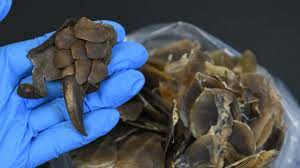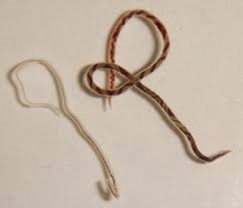Daily News Analysis.
Gems And Jewellery Export Promotion Council: Stop Importing Rough Diamonds
News: The diamond industries have received a new call from the Gems and Jewellery Export Promotion Council (GJEPC) to cease importing rough diamonds.
- The Ministry of Commerce & Industry, Government of India, sponsors the Gems and Jewellery Export Promotion Council (GJEPC), which is the highest authority within the Indian gem and jewelry industry.
- It mostly involves promoting Indian exports and bringing gem and jewelry products from India to the global market.
- In order to do this, the Council gives its members market information on tariffs and trade laws, rates of import levies, jewelry fairs and exhibitions, and enquiries about overseas trade.
- Head office: Maharashtra, Mumbai
- It has more than 7,500 members and regional offices across the nation.
Chipped Diamonds
- After being extracted from the earth’s interior, diamonds that are still in their original form are referred to as rough diamonds.
- This phase precedes the actual cutting or polishing that produces the magnificent diamonds present in each and every one of our one-of-a-kind jewelry pieces.
Process of Kimberly (KP)
- The purpose of the 2003-established KP multilateral trading regime is to stop the flow of conflict diamonds.
- The Kimberley Process Certification Scheme (KPCS), which allows States to impose checks on exports of raw diamonds and certify them as “conflict-free,” is the centerpiece of this system.
2023 India Ageing Report
News: The “2023 India Ageing Report,” published by the United Nations Population Fund, India, predicts a sharp rise in the country’s senior population.
Principal conclusions of the report
- The number of adults over 80 is expected to increase by about 279% between 2022 and 2050.
- It is probable that by 2046, the number of senior people in the nation would surpass that of youngsters (between the ages of 0 and 15).
- It is anticipated that by 2050, the old population in India would account for more than 20% of the country’s total population (the current share is approximately 10% in 2021).
- Among the seniors In India, over 40% of the elderly belong to the lowest quintile of wealth, while over 18% do not earn a living.
- Lifespan Estimate With state-by-state variances, women often live longer than males after all.
- Among the Seniors The gender gap in the senior population is widening, suggesting that women outlive males.
- Gender differences exist in old age poverty older women are more likely to be widowed, live alone, and rely on family for support.
- The research makes recommendations for strategies to counteract the feminization and ruralization of the senior population, raise awareness of senior citizen programs, and encourage in-situ aging.
Manis Mysteria : Species Of Pangolins
News: Recently, scientists discovered a ninth pangolin species that they provisionally dubbed “Manis mysteria,” adding to the eight existing species.
- A new species of pangolin has been found, called Manis Mysteria.
- The recently discovered pangolin species was discovered after a thorough examination of scales found in the Yunnan province of China in 2015 and 2019.
- It is estimated that five million years ago, this new species split off from its relatives in the Philippines and Malaya.
- Mammals with protective scales and a unique look are called pangolins.
- Because of their distinctive scales and food, which mostly comprises ants and termites, they are frequently referred to as “scaly anteaters.”
- Pangolins are the most traded mammals worldwide, and they can be found in both Africa and Asia. They are also renowned for being elusive animals.
- The International Union for Conservation of Nature (IUCN) Red List of Threatened Species has information on every species of pangolin.
- The IUCN Red List lists the Indian pangolin, also known as the thick-tailed pangolin, as Endangered.
What Are Social Bonds?
News: With a total value of Rs 1,040.50 crore, the National Bank for Agriculture and Rural Development (NABARD) recently issued its first social bonds.
- Often referred to as social impact bonds and shortened as SIBs, social bonds are a particular kind of bond in which the issuer is raising money for a project with potential social benefits.
- These bonds are intended to fund initiatives that tackle a range of social challenges, including poverty reduction, affordable housing, healthcare, education, and environmental sustainability.
- India’s first SIB was jointly established in 2020 by the United Nations Development Programme (UNDP) and the Pimpri Chinchwad Municipal Corporation (PCMC) in Pune, Maharashtra.
- The nation’s first SIB with a AAA rating denominated in Indian Rupees, certified externally. Both ICRA and CRISIL have assigned the bonds a “AAA” rating.
- The social bonds had a basic issue size of ₹1,000 crore, and there was an option to retain oversubscription up to ₹2,000 crore, for a total value of up to Rs 3,000 crore.
- Every bond has a face value of ₹1 lakh.
- Adulthood: five years.
- The coupon rate is 5.63%.
NABARD
- The Indian government established this financial institution with the goal of advancing rural development and sustainable agriculture in the nation.
- It serves as the primary regulatory authority for the nation’s rural banking sector.
- It was founded in 1982 as the primary regulatory authority for the rural sector and agricultural financing.
- NABARD was founded by the Indian government in accordance with the National Bank for Agriculture and Rural Development Act of 1981.
- The goal is to secure prosperity by advancing agriculture and rural development through innovative, non-financial, and collaborative financial and non-financial interventions, technology, and institutional development.
Angiostrongylus Cantonensis: Parasitic Worm
News: Recently, a parasitic worm recognised by scientists as Angiostrongylus cantonensis—which is usually found in rats—has been spreading throughout Southeast America.
- Rat lungworms, or Angiostrongylus cantonensis, are a type of parasitic nematode (roundworm) that mostly affects rodents.
- Southeast Asia and the Pacific Islands, especially Hawaii, are normally home to it.
- This parasite primarily infects rats, but it can also infect humans and other species, such as slugs and snails, as incidental hosts.
- It can infect humans and other animals through produce or other dietary items, and it is transmitted by rat excrement.
- The worm may induce eosinophilic meningitis, an uncommon brain illness, once it has entered a human.
- Headaches, tingling, fevers, vomiting, and painful sensations in the skin are some of the symptoms that may be present.
- Being unable to exist for an extended period in the human body, parasites usually resolve themselves over time without special treatment.
- In severe circumstances, the worm can put humans in a coma or even kill them. It can also infect dogs.
- The parasite does not presently have a specific therapy.








